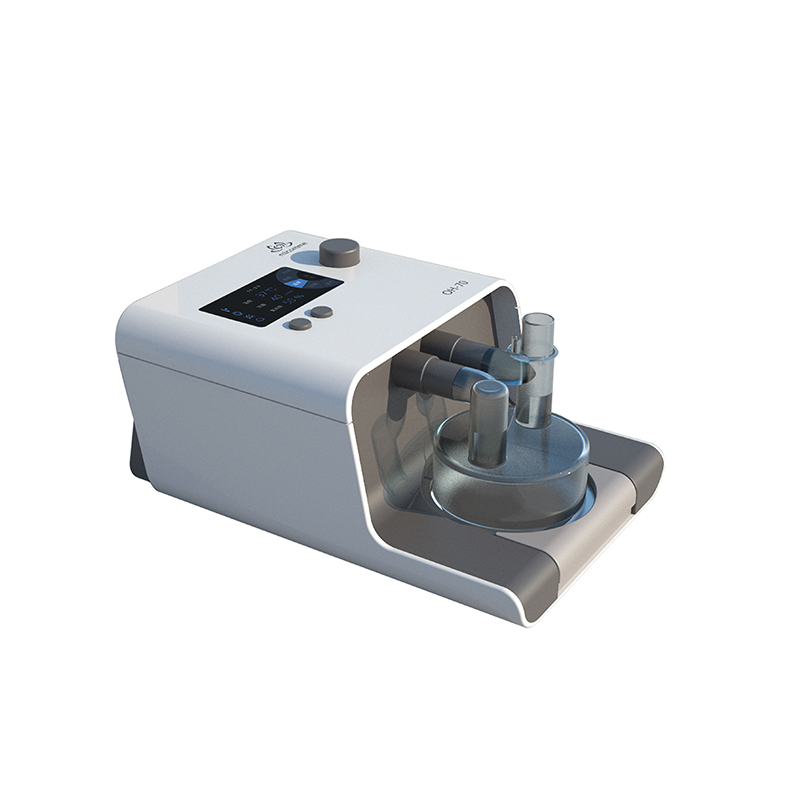High-flow oxygen therapy refers to the way of providing effective flow therapy for patients by providing high-flow, accurate oxygen concentration and warming and humidifying air-oxygen mixed gas. It can quickly improve the patient's oxygenation level and maintain the normal operation of airway mucus cilia.
High-flow oxygen therapy is widely used in clinic for acute hypoxic respiratory failure, post-extubation oxygen therapy, acute heart failure, chronic airway disease, and some invasive respiratory procedures in clinical practice due to its unique physiological effects. Especially for patients with acute hypoxic respiratory failure, high-flow oxygen therapy is significantly better than traditional oxygen therapy in terms of raising the oxygen partial pressure, and the effect is no less than non-invasive ventilation, but HFNC has better comfort and tolerance than non-invasive ventilation. Therefore, HFNC is recommended as a first-line respiratory therapy for such patients.
High-flow Nasal Cannula (HFNC) refers to a type of oxygen therapy that directly delivers air and oxygen mixed high-flow gas of a certain oxygen concentration to a patient through a nasal plug catheter without a seal. High-flow oxygen therapy (HFNC) was originally used as a respiratory support alternative to continuous positive pressure ventilation (NCPAP) and was widely used in neonatal respiratory distress syndrome (NRDS), and it has achieved a certain effect. With the increasing use of HFNC in adults, medical staff also recognize its unique advantages in the use of different from ordinary oxygen therapy and non-invasive mechanical ventilation.


Nasal high-flow oxygen therapy (HFNC) has unique physiological effects:
1. Constant oxygen concentration: the oxygen flow rate provided by the traditional low-flow oxygen therapy device is generally 15L/min, which is far lower than the actual peak inspiratory flow of the patient, and the insufficient flow rate will be supplemented by the air inhaled at the same time, so inhale oxygen The concentration will be severely diluted and the specific concentration is unknown. The high-flow respiratory therapy device has a built-in air oxygen mixer and can provide a mixed gas flow of up to 80L/min, which is greater than the peak inspiratory flow of the patient, thereby ensuring a constant concentration of inhaled oxygen and up to 100%;
2. Good temperature and humidity effect: HFNC can provide high flow gas at 37℃ and 100% relative humidity, which has great advantages compared with traditional oxygen therapy;
3. Washing the dead cavity of the nasopharynx: HFNC can provide up to 80L/min of gas, which can flush the dead cavity of the nasopharynx to a certain extent, so that it can provide high oxygen concentration and low carbon dioxide gas, which can improve blood oxygen. The role of saturation in reducing carbon dioxide;
4. Generate a certain positive airway pressure: Some researchers have found that HFNC can produce an average pressure of about 4cmH2O, and when the mouth is closed, it can produce a pressure of up to 7cmH2O. It can be seen that HFNC can produce a similar effect to continuous positive airway pressure (CPAP). However, unlike CPAP, HFNC is aimed at a constant flow rate to produce an unsteady airway pressure, so in clinical use, the patient's mouth must be closed to achieve the desired effect;
5. Good comfort and tolerance: Most studies have found that because of its good temperature and humidity effect and ease of use, the nasal high-flow oxygen therapy device has better comfort and tolerance than high-flow oxygen masks and non-invasive .
Sepray Nasal High Flow Oxygen Therapy OH series respiratory humidification therapy instrument provides effective flow therapy for patients by providing high-flow, precise oxygen concentration and warmed and humidified air-oxygen mixed gas.
Applied departments:
ICU, Respiratory dept. Emergency dept. Neurosurgery dept. Geriatrics dept.Cardiolology dept.

Post time: Jul-13-2020

